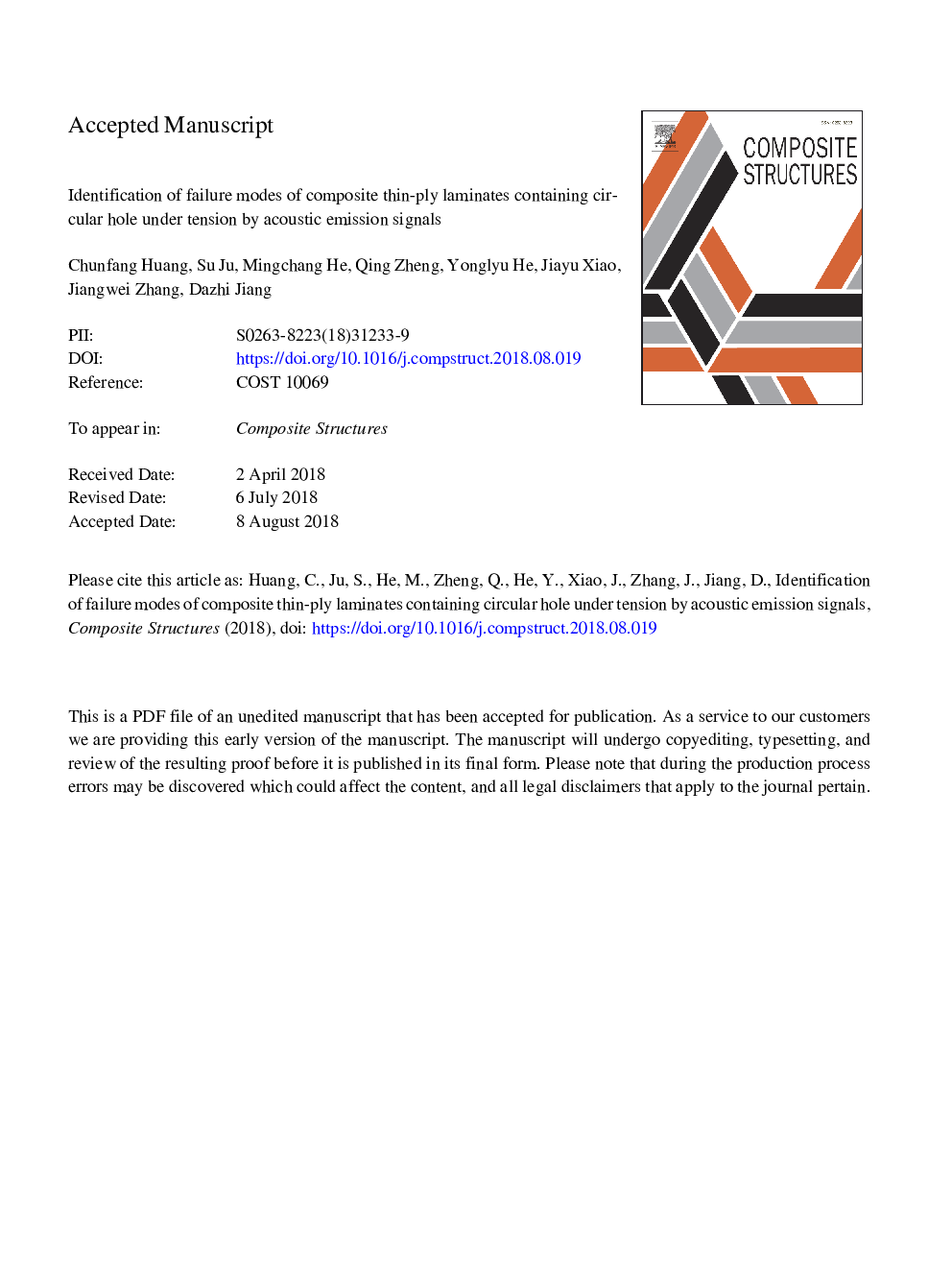| Article ID | Journal | Published Year | Pages | File Type |
|---|---|---|---|---|
| 8947007 | Composite Structures | 2018 | 40 Pages |
Abstract
Composite thin-ply laminates have been reported to exhibit superior performance in various loading conditions than standard-ply laminates due to positive size effects. However, the ultimate tensile strength of the thin-ply (<0.125â¯mm) laminates containing circular hole was lower than that of the thick (>0.125â¯mm) or standard-ply (0.125â¯mm) laminates with same size of the hole. Besides, fracture morphologies showed a transition from a combined mode of matrix crack, delamination and pull-out at 45° and â45° ply in the thick and standard-ply laminates to a quasi-brittle fracture in the thin-ply laminates. In order to explain the experimental phenomena, acoustic emission was used in this paper to identify and distinguish the failure modes of laminate specimens containing circular hole with different ply thickness, and finite element simulation was adopted to investigate the cause of lower tensile strength in the thin-ply specimen. Carbon fiber reinforced polymer matrix composite laminate specimens were prepared using prepregs with different ply thicknesses (0.02â¯mm, 0.055â¯mm and 0.125â¯mm). In tensile test, higher initial stress of damage, lower ultimate strength and quasi-brittle fracture morphology could be observed in the thin-ply laminate specimens with an open hole. The results of acoustic emission analysis demonstrated that the matrix damage and delamination were suppressed in the thin-ply laminates, and superior damage suppression and crack-propagating resistance in the thin-ply laminates lead to quasi-brittle fracture morphology. Besides the more homogeneous micro-structure and isotropic behavior of the thin-ply laminates leaded to higher initial damage stress compared to the laminates with thick plies. However, according to finite element analysis, the thin-ply laminates exhibited much stronger stress concentration after initial damage until ultimate failure of the specimens, leading to lower ultimate strength under tensile loading.
Related Topics
Physical Sciences and Engineering
Engineering
Civil and Structural Engineering
Authors
Chunfang Huang, Su Ju, Mingchang He, Qing Zheng, Yonglyu He, Jiayu Xiao, Jiangwei Zhang, Dazhi Jiang,
